Chameli Flower Plant Benefits, Types, Grow & Care Buy Chameli Flower Online
Save Earth Life2024-06-26T00:45:16+05:30According to Beverley Nichols, a well-known author, composer, and public speaker who has written more than 60 books said: “Jasmine has a seductive smell & to overcome by the aroma of the jasmine, is a wonderful type of defeat”. This line beautifully describes the aroma of the Chameli flower.
Jasmine – The flower that starts to bloom when the sun goes down. The beautiful 200 or more different colors having scented smells are the best part of these night jasmine flowers. We have taken an initiative to aware people of the benefits of planting trees to save the earth’s life.
Here, in this blog, we are trying to enlighten the users about the types and uses of the Jasmine/Chameli Plant.
| Other Names | Juhi, Chameli, Mogra, Champa Bela, Motia, Malli puvvu, Juhi, Moonlight in the groove. |
|---|---|
| Flower Size | 2.5 cm |
| Biological Name | Jasminum sp. |
| Types of Species | More than 200 |
| Grown in the Region | Syria, Hawaii, Pakistan, Thailand, India, Indonesia, Australia and many more. |
| Plant Family | Oleaceae |
| Temperature | Grows well in mild winter, warm summer, moderate rainfall, and sunny days. |
| Flowering Season | March - June |
| Popular as | Belle of India, Queen of Fragrance, National flower of Indonesia, Pakistan, Thailand & Syria |
Table of Contents
ToggleAbout Chameli Flower Plant
One of the oldest and most fragrant flowers is the Chameli Flower. Due to its exceptional fragrance, the flower is recognized as the “Queen of Flowers” and referred to as the “Queen of Fragrance” or the “Belle of India”, which instantly calms and energizes a person. It also comes in over 300 different types of Chameli flowers which grows in different parts of the world and are appraised based on the smell of the flower.
The origin of jasmine is said to have started first in Asia and later on spread to Europe. Later on, it spread to many other parts of the country such as Australia, England, France & Italy. In India, several species of the Jasmine flower are spread around several cities.
The Jasmine flower is called by different names in India as Chameli, Motia, Jaati, Mallige, Juhi, Mogra, or Moonlight. The most famous part of India that cultivate Jasmine is Ajmer, Jaunpur, Madurai, Mysore, Ranaghat, Jaipur, Udaipur, Kota and other parts of Andhra Pradesh as well as Maharashtra.
Types of Jasmine/Chameli Flower Plants
Various types of Jasmine/Chameli flowers can be grown in India in different climatic conditions, soil requirements and flowering seasons. Some of these plants are discussed below:
1. Common Jasmine (Jasminum officinale)
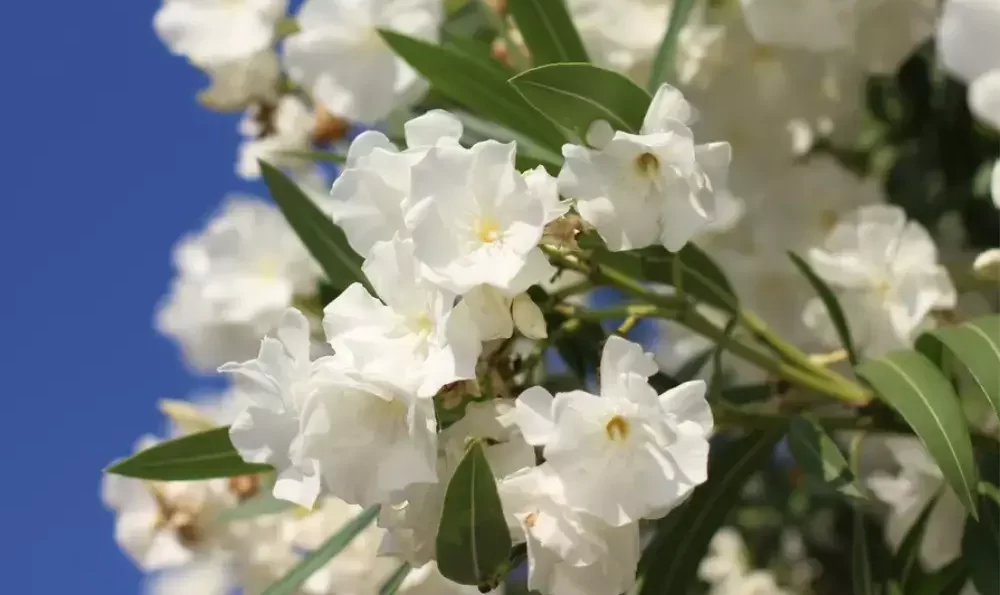
These deciduous climbers, sometimes known as Summer jasmine, True jasmine, or Poet’s jasmine, are the most popularly grown jasmine variety in India.
The flowers have five petals, are white in color and have an intense perfume that can spread up to 1 KM of range. These plants are a wonderful addition to your garden because they bloom in the summer with big flowers and mesmerizing smell.
2. Arabian Jasmine (Jasminum sambac)
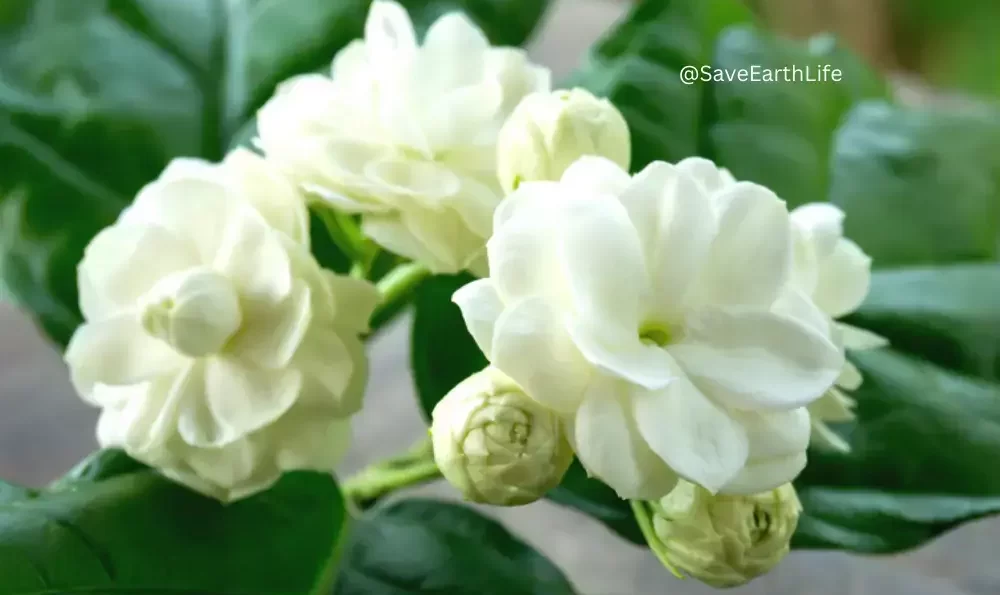
These flowers are grown in the eastern Himalayas, which contain several layers of beautiful white petals. In India, it is a vine that blossoms all year round.
These flowers are also fantastic for your home’s decor because of their lovely white hues and mesmerizing scent. This type of jasmine requires a temperate climate to grow well and flower.
3. Yellow Jasmine (Jasminum humile)
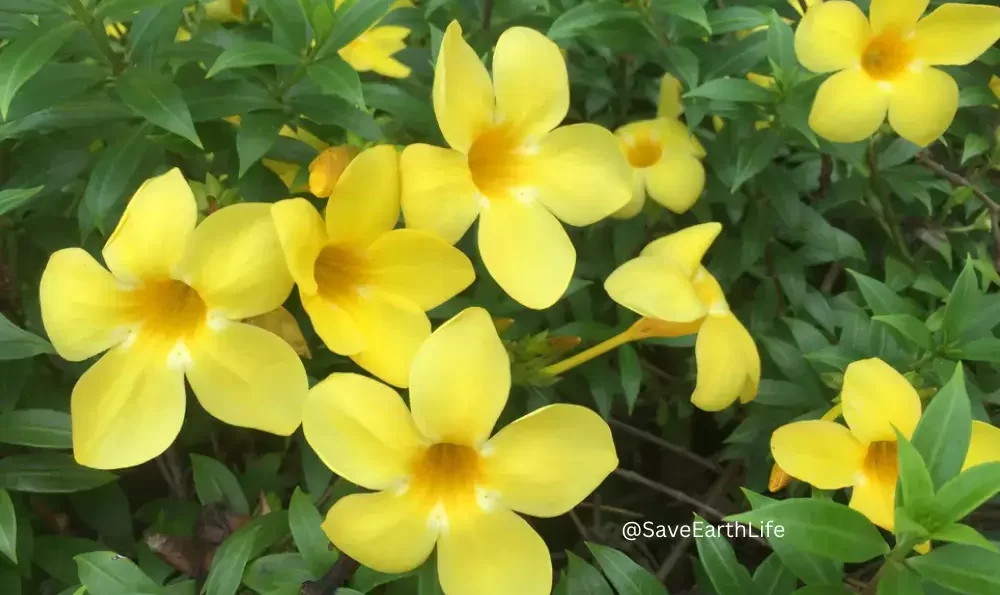
These types of Chameli flowers are also grown in the Himalayan region which requires cold temperatures to grow and flower. The name of these jasmine flowers comes from the flower smell, the yellow color and the funnel-shaped appearance of the flower.
4. Star Jasmine (Trachelospermum jasmioides)
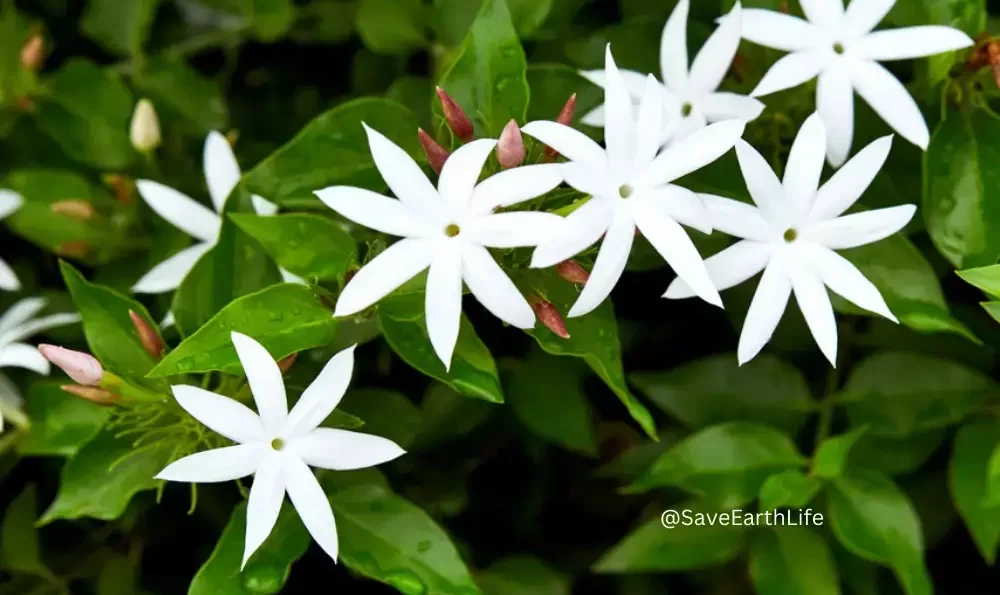
These are not true chameli flower category plants. However, the flower is still considered a variety of Jasmine due to its color, smell and similarity.
These are found in almost all Indian homes and can grow at any temperature. The flowers are white in color and spread just like a star, thus named Star Jasmine.
5. White Jasmine (Jasminum polyanthum)
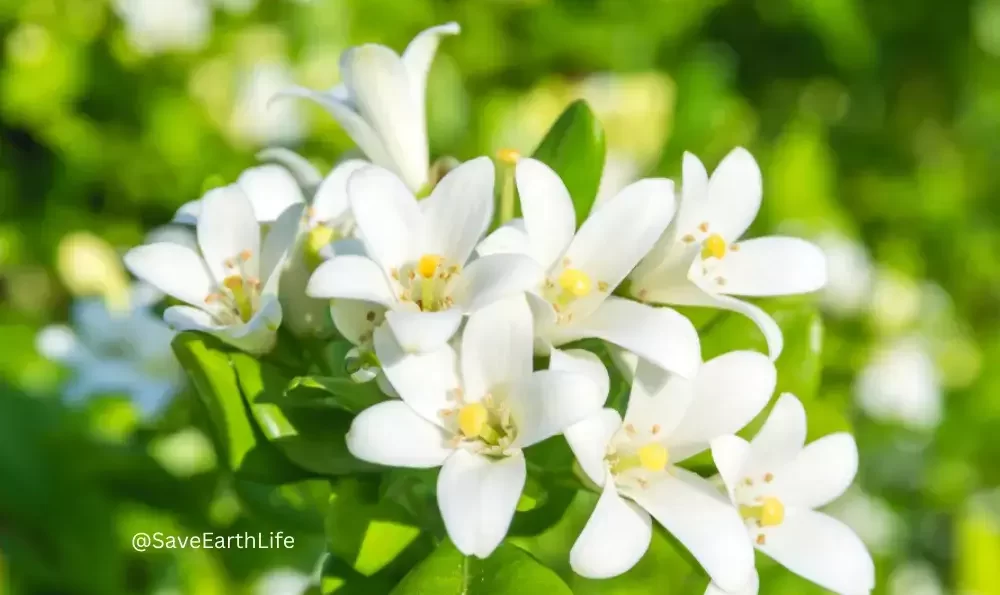
It is a jasmine climber variety that is evergreen and grows in any type of climatic condition. These plants grow quickly in homes for decorative purposes. They have stunning red-pink flowers and dark green leaves.
6. Cape Jasmine (Gardenia jasminoides)
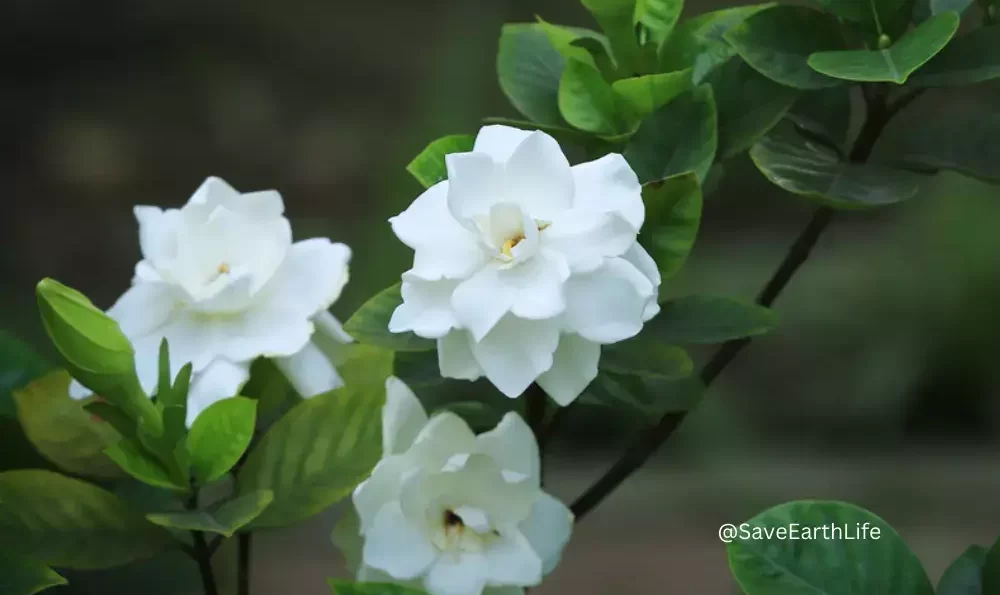
These plants thrive in warm regions and demand a lot of care to grow, yet they are still preferred by people due to their appearance. The scent of these flowers is seductive and remarkable. But still, it is considered a fake jasmine flower as they are not a part of the jasmine family.
7. Night Blooming Jasmine (Cestrum nocturnum)
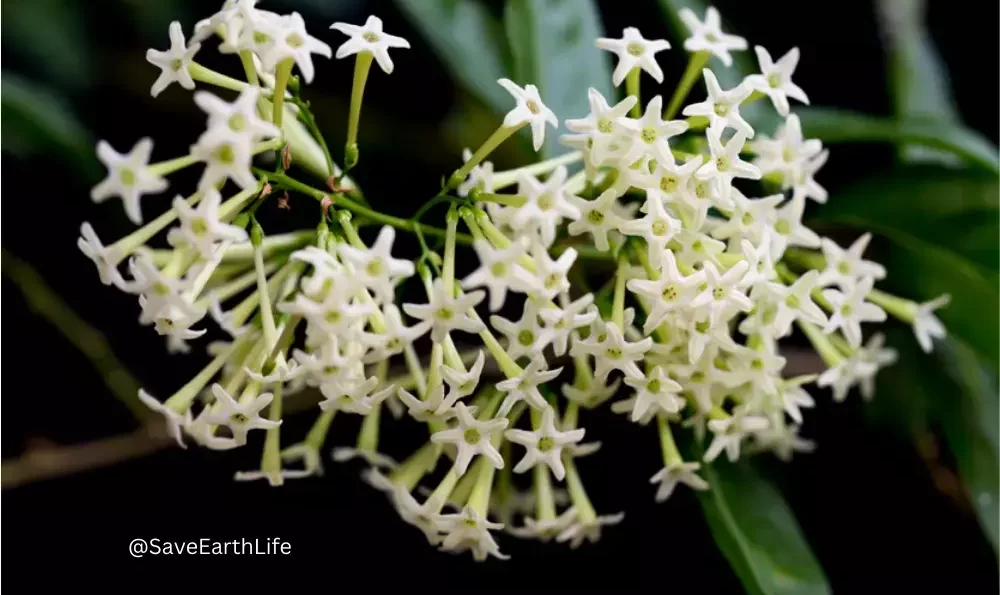
These flowers are famous by the name “Raatrani” and are grown adversely around India. These types of jasmine flowers can survive in subtropical regions and cooler environments.
This night jasmine flowers can be planted as indoor flowers also. These flowers bloom at least four times per year in different seasons. The scent of the flower is stunning and can smell beyond 1 KM.
8. Wild Jasmine (Jasmine fruticans)
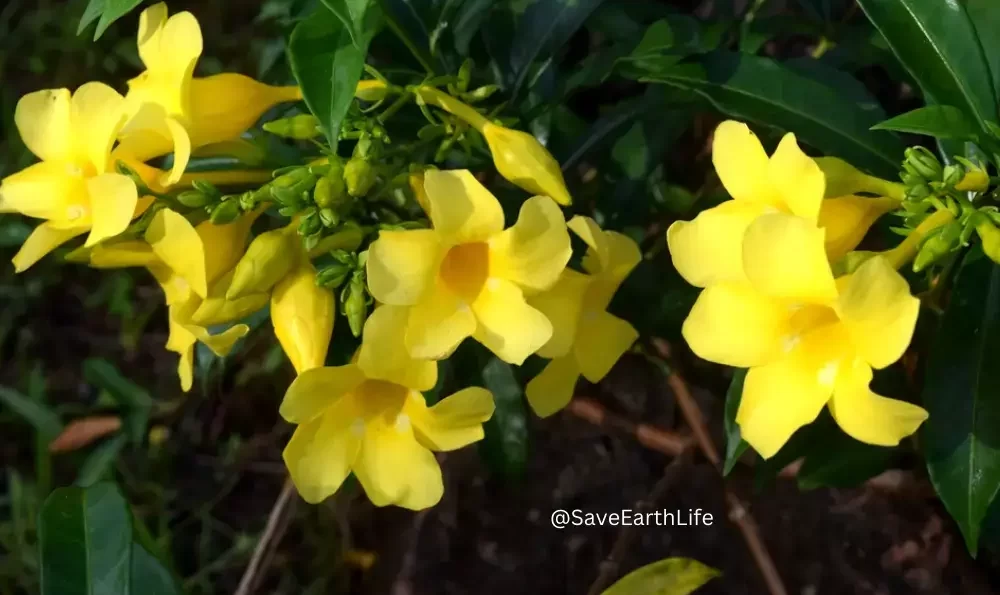
This type of chameli/jasmine flower has a bunch of yellow flowers with little or no smell and a dark green appearance. They are mostly grown in the wild region and need little care. They can even grow in humid & dry climates. The flowering is slow when compared to the other flowering plants.
9. Royal Jasmine (Jasminum grandiflorum)
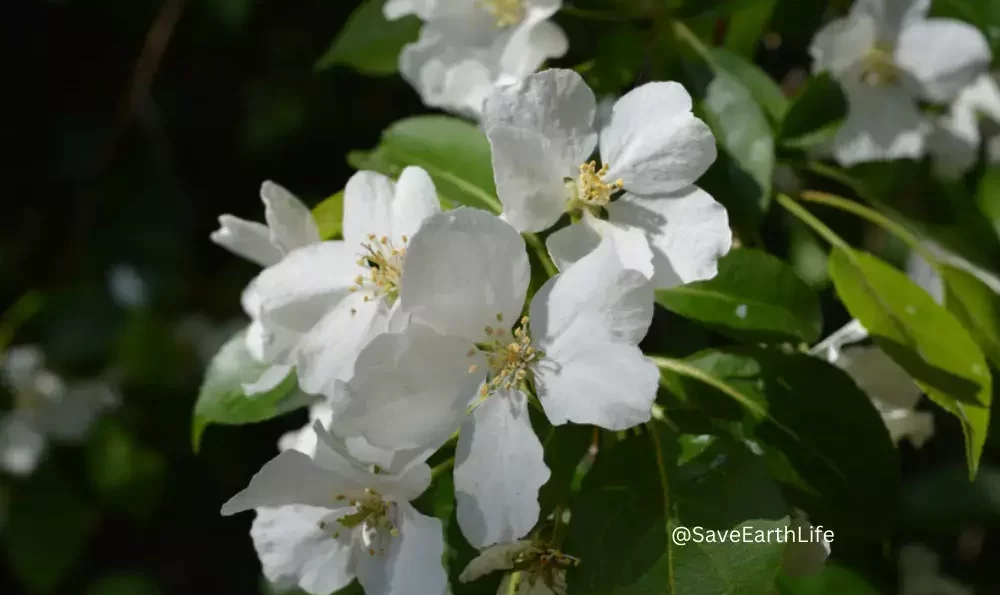
The leaves of Royal Jasmine are used in a variety of herbal medicines according to Ayurveda. This type of jasmine flower needs a temperate or sub-tropical climate to grow.
They are mainly used for ornamental purposes because of their beautiful, eye-catching appearance. The flowers are white-pink in color and have a distinctive scent.
10. Primrose Jasmine (Jasminum mesnyi)
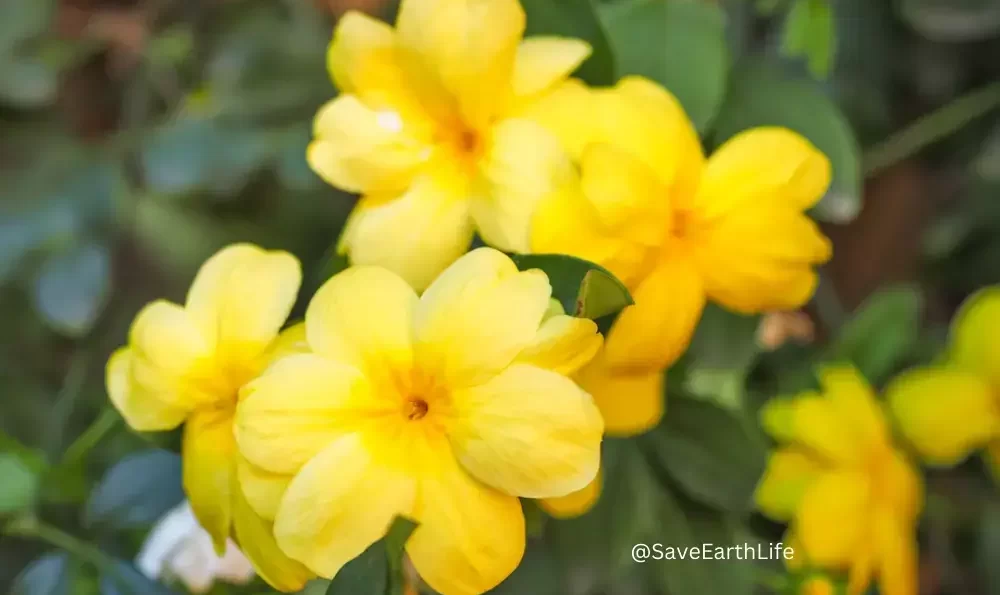
This kind of jasmine can grow quickly and without care and is kept under control with careful pruning. It is an evergreen shrub with the dark green color of leaves and yellow flowers. Every time you prune the leaves of this jasmine flower, it becomes bushier, making it a popular choice for landscaping.
How to Grow Chameli Flower Plant?
Every chameli/jasmine flower requires variations in temperature, climate, soil structure, irrigation and pest protection. Let’s have a brief look at what is important to grow the chameli flower in different conditions.
Things to Remember
- Various types of soil can be used to grow jasmine. Mostly, the Jasmine Flower grows well in moist, well-drained, sandy loam to clayey soil.
- Jasmine mostly loves the mild and tropical climates for its growth. It is grown in mild winter, warm summer and moderate rainfall and sunny days.
- The chameli flower plants must be planted between June to November.
- Rainfall requirements range between 800 to 1000 mm and are optimum for growth and development.
Steps to Grow Chameli Flower Plant
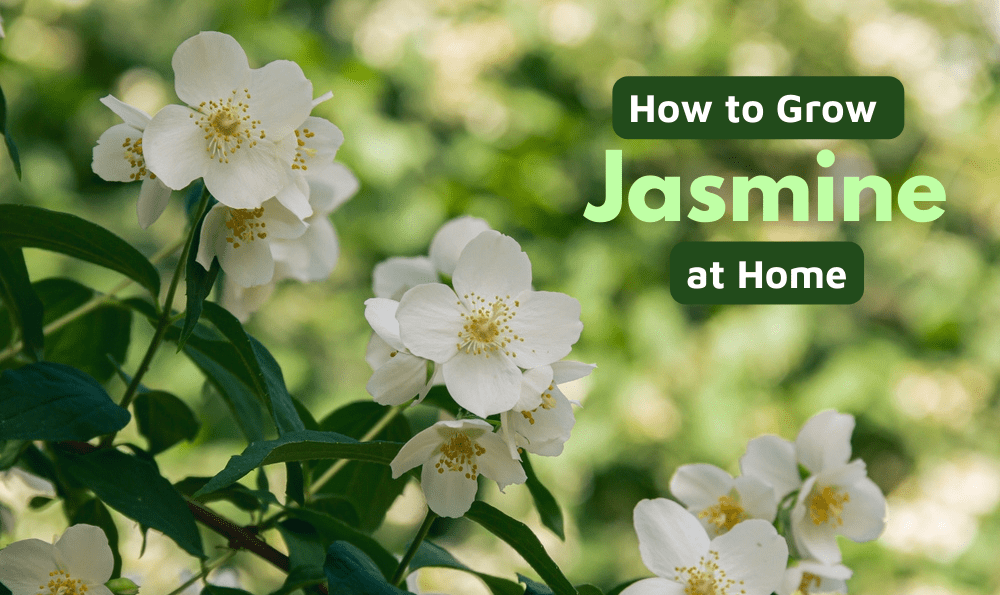
Step 1:
Find a suitable spot for the jasmine plant: Each jasmine plant requires a different amount of light and soil to grow but most of the plants require shade and sun to grow fully. Some plants prefer climbers whereas some lay on the ground and grow. Also, some of the chameli flowers grow as shrubs. Always pick a spot according to the requirement of the plant.
Step 2:
Prepare the soil: Most of the jasmine grows well in rich, well-drained soil. If you are planting it in the flower pot, make a hole below the pot to drain the water completely. If you are planting outside the pots, insure that the water does not get stagnant over a place.
Step 3:
Spacing: Remember the spacing between two jasmine flower plants. The spacing must be adequate so that both the jasmine plant can grow to their full length. The basic spacing between the two jasmine flower plants must be 8 feet.
Step 4:
Plant the chameli flower: Gently place the root ball of jasmine inside the soil (flower pot or directly ground). Slightly put some water and cover the root ball with extra soil, so that the water gets stuck below the plant. Water it well to settle.
Step 5:
Add some fertilizers: Add some nitrogenous-rich fertilizers in the soil and organic manure along with some water. Keep repeating this activity every 6 months to let your chameli flower grow to its actual size.
Growing Chameli Flower Plant Through Layering
In North India, layering takes place from June to July, whereas in South India, it happens from June to December. Well-matured, one-year-old shoots are cut in a slanting manner and buried deep in the ground i.e. about 10-15 cm deep to prepare layers. In 90 to 120 days, the root formation takes place.
Growing Jasmine Flower Plant Through Cutting
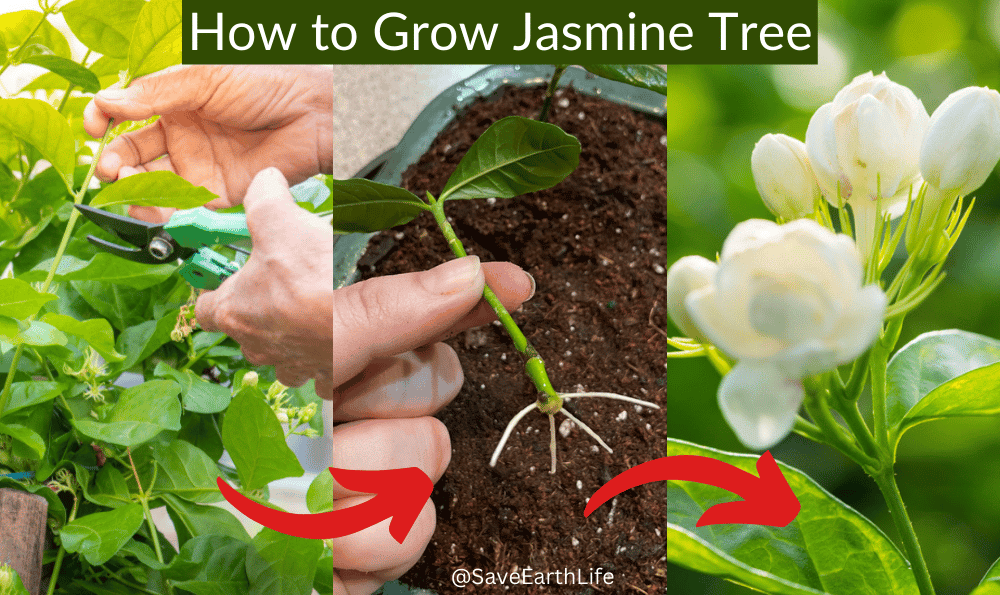
Some of the jasmine plants can be grown through the cutting method. Cuttings with 3–4 nodes that are 22–25 cm long are often placed in the rooting material. The highest percentage of rooted cuttings are those obtained between April and September.
Before planting, growth-regulating agents or fertilizers are applied to the basal section of softwood cuttings. The cuttings are 7cm apart and more than 5 cm deep in the rooting medium. After 4 to 5 months of germination in the rooting environment, the cuttings are prepared for transplantation into the main field.
How to Care Jasmine/Chameli Flower Plant?
- Although taking care of the Jasmine plant is not difficult but it takes a lot of time and effort. They need proper care when they are young but once they get old, they just need pruning from time to time.
- Some jasmine plants need stakes to climb up and grow when they are in the growing stage. Tie a long stake to support the jasmine plant growth.
- For the best result in the flowering season, fertilize the plant before the onset of the spring season before the jasmine plant starts new growth.
- After 1 or 2 years, pinch off and prune the tips of the plant to promote new growth.
- The plants also attract pests and millets, providing the plant with some pesticides to protect it from spider mites.
- Organically, you can use a combination of neem or horticultural oil to protect the plant from these pests.
- If your jasmine plant isn’t flowering, then you must decrease the level of nitrogen in the plant. The more nitrogen in the soil, the more difficult it is for jasmine to grow.
Indoor chameli /Jasmine Flower Plant Care
- Some dwarf verities of the jasmine flower are used to grow indoors. The one demerit is that they require some sunlight and moisture to grow well.
- You can control the height of the growing jasmine through pruning in the spring season.
- The fertilization should be done twice - annually for the indoor jasmine flower plant.
- Before planting try organic fertilizers to protect the plant from pests.
Uses & Benefits of Chameli Flower Plant
The only reason to grow jasmine in your house is the beautiful appearance of jasmine and the fragrance they produce. But do you know these are not the only benefits of having jasmine flowers in your house?
Apart from being good at fragrance, the jasmine flower attracts a lot of insects in your gardens such as butterflies, grasshoppers, etc. these flowers are also edible flowers that are used with tea to make delicious jasmine tea.
Now let us look at some of the benefits of growing jasmine plants.
Jasmine Tea
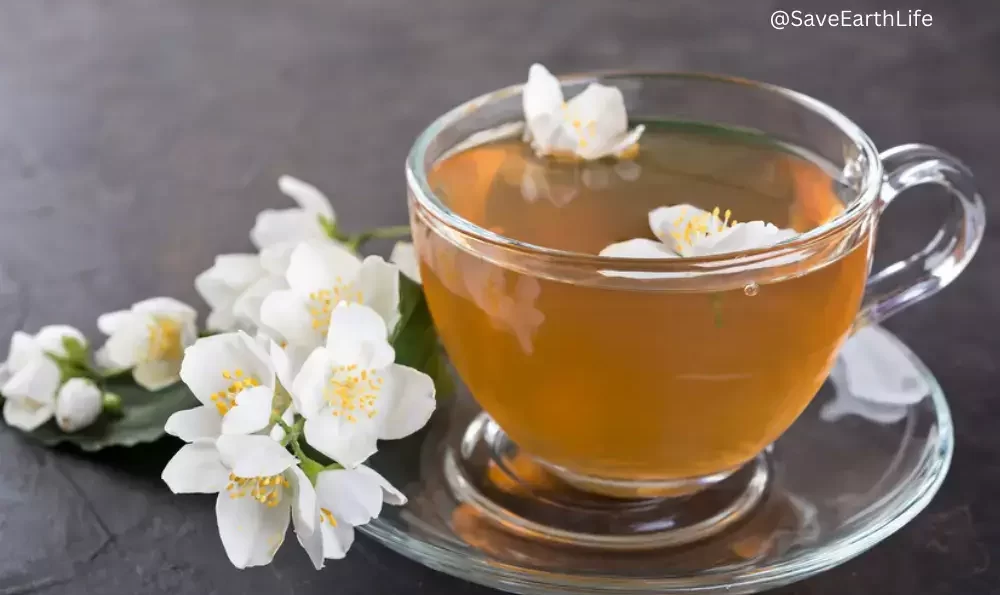
- Jasmine tea is a type of herbal tea that has a floral scent and a fruity taste.
- This herbal tea has many health benefits such as it helps people overcome depression, reduce stress, and calm their nerves.
- The tea also has antiviral and antibacterial characteristics, which help treat various diseases such as bronchitis, strep throat, the flu, pneumonia, and other lung infections.
- Additionally, jasmine tea is frequently used in bathing to provide socking of herbal jasmine that reduces stress and promotes relaxation while also easing aches, pains, and stiffness of the body.
- The chameli flower also softens skin, eases hemorrhoids, and even treats some external bacterial infections.
- Talking about a person’s heart condition, the jasmine flower helps in blood circulation and prevents heart attacks.
Jasmine Essential Oil
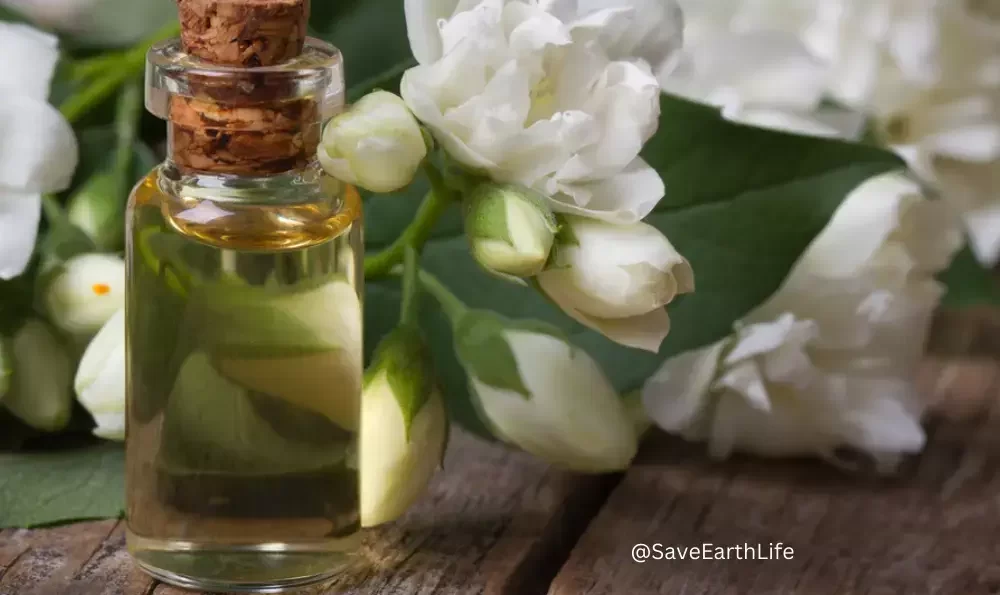
- One of the most popular products we get from jasmine is the essential oil from the jasmine petals.
- One type of Jasmine Flower which is Royal Jasmine (Jasminum grandiflorum) has a beautiful, eye-catching appearance.
- The petals of the jasmine flower are heated in an oil diffuser to fill the space with fragrance which is done for aromatic therapy or for giving massage to the skin.
- The fragrance we usually smell from perfumes and scents is basically due to the esters. The chameli flower is rich in the esters compound.
- Jasmine essential oil contains the chemical compound benzyl acetate, a naturally occurring scent that is sweet, floral, and fruity
- This oil has a stronger smell than the flower of jasmine.
- Jasmine essential oil has anti-inflammatory and anti-fungal effects, but only for external usage.
Chameli Flower Ornaments
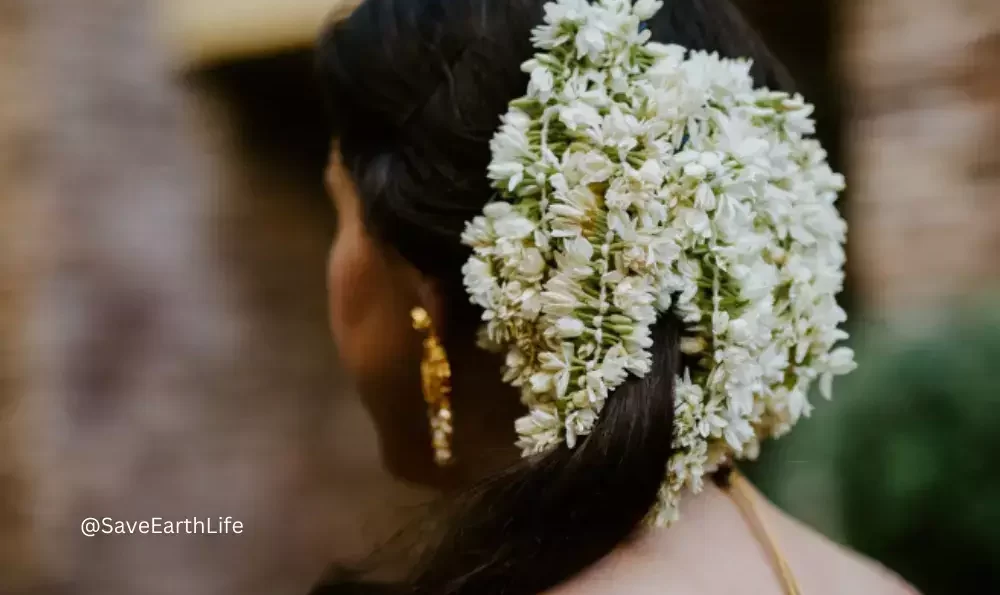
- One type of chameli flower which is Royal Jasmine (Jasminum grandiflorum) has a beautiful, eye-catching appearance.
- The flowers of these jasmines are white-pink in color which produces a distinctive smell.
- These royal jasmines are used as ornaments in India because of their beautiful look and smell which they are pruned together to make necklaces and earrings.
- These jasmine flowers are further used to decorate houses and buildings during functions and festivals in India.
Chameli Flower Religious Importance
- The Jasmine Flower first started growing in the village of ‘Madurai’, a place in Tamil Nadu. The Jasmine Flower popularly known as ‘Madurai Malli’ is named for its origin in this place.
- The chameli flower holds a very special place in Indian culture and so it is a part of many rituals and customs.
- The Jasmine Flower is also mentioned in the Hindu methodologies like “Mahabharata and Kamasutra”.
- It is also believed that when goddess Parvati was meeting with her husband Lord Shiv, she was beautifully decorated with the jasmine flower.
- She used different types of chameli flowers every time she met with Lord Shiva.
- Goddess Parvati loved and adored the Jasmine flower because of which the Jasmine flower is grown in and around Madurai.
- The two basic types of jasmine used for oil production are Royal Jasmine (Jasminum grandiflorum) and Common Jasmine (Jasminum officinale)
Facts About the Chameli Flower Plant (Summary)
- A matured chameli flower plant has a height that reaches 10 to 15 feet
- The leaves of the jasmine plant are mostly evergreen
- Most types of jasmine flowers have a white color and are small in size generally
- Basically, the trees must be planted between June to November.
- The jasmine flower is grown directly through seeds, layering, or cutting.
- The chameli flower is the most popular kind of fragrant oil that has a pleasant and seductive smell
- The two basic types of jasmine used for oil production are Royal Jasmine (Jasminum grandiflorum) and Common Jasmine (Jasminum officinale)
FAQ's - Related to Jasmine Flower
Some jasmine flowers are used to make ornaments which are pruned together for the same. The steps involved are:
- Collect a good amount of jasmine flower
- Tie the end of one jasmine flower to the other end
- Take a needle with a thread and prune the stem of both the jasmine flower
- Repeat the step above steps until you get the required length of the ornament
- Tie a knot in the end after the last jasmine flower
Several states and countries consider jasmine as their national flower which includes:
- Pakistan: Jasminium Officinale (also known as “Chameli” or “Yasmin”), is the country’s national flower.
- Thailand:Jasmine flowers are symbolic of motherhood.
- Syria: The city Damascus, also known as the City of Jasmine, holds this flower as a symbol.
- Indonesia: Jasminium Sambac is also Indonesia’s national flower.
The color of jasmine varies s the type of jasmine varies. The color varies from pale tint to yellow, white, cream, light pinkish, etc.
The flower is planted in the month July to October and they start to bloom in the month of March to June.
Some best-smelling flowers in India include roses, jasmine, lilies, tuberose, Nyctanthes, Gardenia, etc.
Jasmine flower is known by many different names which depend on its origin, color, or type. Some common names include ‘Chameli’, ‘Yasmin’, ‘Malli Puvvu’, ‘Mogra’, etc.
There is a flower-growing hormone called ‘Florigen’ which travels among the plant from the leaves to the flowering shoots during the daytime. It accumulates in the flowering shoots of the jasmine plant and induces flowering during the night.
There is a flower-growing hormone called ‘Florigen’ which travels among the plant from the leaves to the flowering shoots during the daytime. It accumulates in the flowering shoots of the jasmine plant and induces flowering during the night.
Jasmine grows well in the sub-tropical area, especially in the shady region. They need an average amount of sunlight when they grow. The soil requirement varies from well-drained but moist sandy and loamy soil.
Yes, as long as the jasmine flower is getting sunlight, adequate moist soil, and fertilizers, they can grow in the pots too. The only thing one needs to remember is to prune them every 4 months.
Why does my jasmine not smell?
The main reason why jasmine doesn’t bloom can be the low amount of sunlight and poor soil condition. Jasmine flower needs 6 to 7 hours of sunlight along with slightly moist soil which helps them grow better in summer.

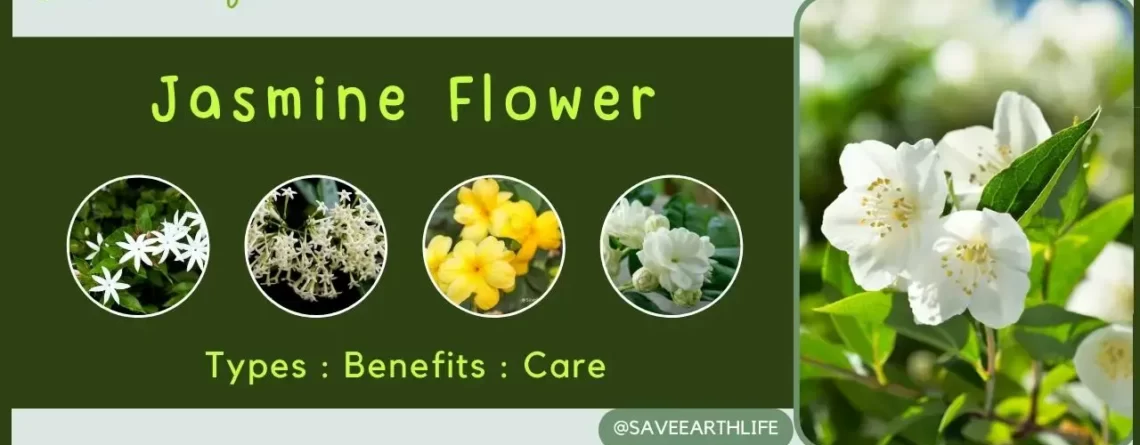
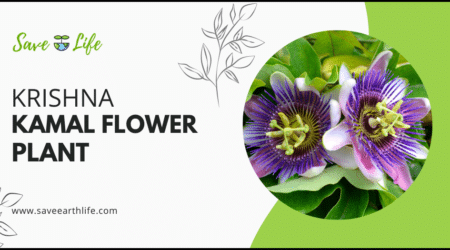
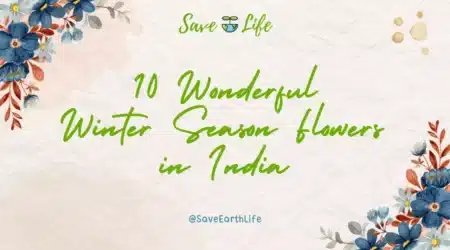
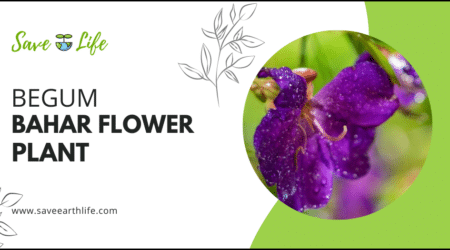

Comment (1)
I do not even know how I ended up here, but I thought this post was good. I do not know who you are but certainly you are going to a famous blogger if you aren’t already 😉 Cheers!
Comments are closed.